
Welcome To Afghanistan
, In connection with The Khobi SHow
 Hamara Radio Rules
Hamara Radio Rules
All DJs, RJs and Listeners should abide by the rules mentioned in HF Guidelines -> Guidelines for DJ/RJs and Guidelines for HF Radio Listeners - http://www.hamaraforums.com/index.php?act=boardrules
| IDOL |
 Sep 4 2006, 09:52 PM Sep 4 2006, 09:52 PM
Post
#1
|
 Dedicated Member  Group: Members Posts: 5434 Joined: 24-January 05 From: Calgary, Canada Member No.: 1583 |
Hey Cuties,
Planning to present a special Afghan Music Program. This will include information on traditional instruments. biography of legends Meanwhile you'll have chance to listen to some old/new super singers.Just vote whether or not ur interested to listen to this show. .......................................................................
 |
  |
Replies
| Nimii |
 Sep 5 2006, 09:13 AM Sep 5 2006, 09:13 AM
Post
#2
|
|
Dedicated Member  Group: Members Posts: 22493 Joined: 20-October 03 Member No.: 3 |
Khobz do keep me notified!
N |
| IDOL |
 Sep 5 2006, 10:32 AM Sep 5 2006, 10:32 AM
Post
#3
|
 Dedicated Member  Group: Members Posts: 5434 Joined: 24-January 05 From: Calgary, Canada Member No.: 1583 |
Khobz do keep me notified! N sweet nimzz.........how can i do this show with out my ONE and ONLY best cute nicest friend........ur gonna be the first.........dolhan wale hon , akhir .......................................................................
 |
| IDOL |
 Sep 8 2006, 10:28 PM Sep 8 2006, 10:28 PM
Post
#4
|
 Dedicated Member  Group: Members Posts: 5434 Joined: 24-January 05 From: Calgary, Canada Member No.: 1583 |
Welcome to Afghanistan, History:
Amanullah Shah (June 1, 1892 - April 25, 1960) was the ruler of Afghanistan from 1919 to 1929. He led Afghanistan to independence from the United Kingdom, and his rule was marked by dramatic political and social change. Amanullah Shah was the son of the King Habibullah Shah. When Habibullah was assassinated on February 20, 1919, Amanullah was already the governor of Kabul and was in control of the army and the treasury. He quickly seized power, imprisoned any relatives with competing claims to the Amirship, and gained the allegiance of most of the tribal leaders. Russia had recently undergone its Communist revolution, leading to strained relations between the country and the United Kingdom. Amanullah Khan recognized the opportunity to use the situation to gain Afghani independence. He led a surprise attack against the British on May 3, 1919, beginning the third Anglo-Afghan war. After initial successes, the war quickly became a stalemate as the United Kingdom was still dealing with the costs of World War I. An armistice was reached in 1921, and Afghanistan became an independent nation. Amanullah enjoyed quite a bit of early popularity within Afghanistan and he used his influence to modernize the country. Emulating Reza Shah of Iran, Amanullah created new cosmopolitan schools for both boys and girls in the region and overturned centuries-old traditions such a strict dress codes for women. He created a new capital city and increased trade with Europe and Asia. He also advanced a modernist constitution that incorporated equal rights and individual freedoms. Unfortunately, this rapid modernization created a backlash, just as it had for Reza Shah in Iran, and a reactionary uprising known as the Khost rebellion was suppressed in 1924. At the time, Afghanistan's foreign policy was primarily concerned with the rivalry between the Soviet Union and the United Kingdom. Each attempted to gain the favor of Afghanistan and foil attempts by the other power to gain influence in the region. This effect was inconsistent, but generally favorable for Afghanistan; Amanullah was even able to establish a limited air force consisting of donated Soviet planes. After Amanullah travelled to Europe in late 1927, opposition to his rule increased. An uprising in Jalalabad culminated in a march to the capital, and much of the army deserted rather than resist. In early 1929, Amanullah abdicated and went into temporary exile to India. From India the ex-king travelled to Europe and settled in Italy, and later to Switzerland. Amanullah Shah died in Zurich, Switzerland in 1960. Very few of his many reforms were continued once he was no longer in power.   Colofon http://en.wikipedia.org/wiki/Amanullah_Khan .......................................................................
 |
| IDOL |
 Sep 8 2006, 10:34 PM Sep 8 2006, 10:34 PM
Post
#5
|
 Dedicated Member  Group: Members Posts: 5434 Joined: 24-January 05 From: Calgary, Canada Member No.: 1583 |
Afghanistan Old Pictures (1925) , Kabul the capital
         .......................................................................
 |
| IDOL |
 Sep 8 2006, 10:37 PM Sep 8 2006, 10:37 PM
Post
#6
|
 Dedicated Member  Group: Members Posts: 5434 Joined: 24-January 05 From: Calgary, Canada Member No.: 1583 |
Afghanistan Old Pictures (1925) , Kabul the capital
        .......................................................................
 |
| IDOL |
 Sep 8 2006, 10:39 PM Sep 8 2006, 10:39 PM
Post
#7
|
 Dedicated Member  Group: Members Posts: 5434 Joined: 24-January 05 From: Calgary, Canada Member No.: 1583 |
Afghanistan Old Pictures (1925) , Jalalabad the province
       .......................................................................
 |
| IDOL |
 Sep 8 2006, 10:42 PM Sep 8 2006, 10:42 PM
Post
#8
|
 Dedicated Member  Group: Members Posts: 5434 Joined: 24-January 05 From: Calgary, Canada Member No.: 1583 |
Afghanistan Old Pictures (1925) , Jalalabad the province
       .......................................................................
 |
| IDOL |
 Sep 8 2006, 10:44 PM Sep 8 2006, 10:44 PM
Post
#9
|
 Dedicated Member  Group: Members Posts: 5434 Joined: 24-January 05 From: Calgary, Canada Member No.: 1583 |
Afghanistan Old Pictures (1925) , Kandahar the province/ old capital
  .......................................................................
 |
| IDOL |
 Sep 8 2006, 10:47 PM Sep 8 2006, 10:47 PM
Post
#10
|
 Dedicated Member  Group: Members Posts: 5434 Joined: 24-January 05 From: Calgary, Canada Member No.: 1583 |
Afghanistan Old Pictures (1925) , Paghman the province/ old picnic place
            .......................................................................
 |
| IDOL |
 Sep 8 2006, 10:49 PM Sep 8 2006, 10:49 PM
Post
#11
|
 Dedicated Member  Group: Members Posts: 5434 Joined: 24-January 05 From: Calgary, Canada Member No.: 1583 |
Afghanistan Old Pictures (1925) , Laghman the province
  .......................................................................
 |
| IDOL |
 Sep 8 2006, 10:52 PM Sep 8 2006, 10:52 PM
Post
#12
|
 Dedicated Member  Group: Members Posts: 5434 Joined: 24-January 05 From: Calgary, Canada Member No.: 1583 |
Afghanistan Old Pictures (1970s) , Kabul
 .......................................................................
 |
| IDOL |
 Sep 8 2006, 11:05 PM Sep 8 2006, 11:05 PM
Post
#13
|
 Dedicated Member  Group: Members Posts: 5434 Joined: 24-January 05 From: Calgary, Canada Member No.: 1583 |
Afghan Little Girls with Traditional Dresses
Attached image(s) 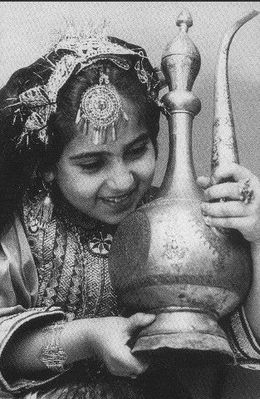 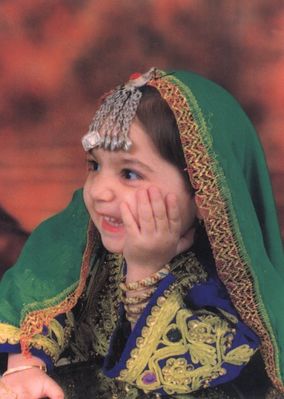 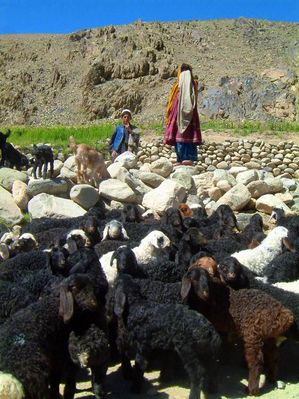 
.......................................................................
 |
| IDOL |
 Sep 8 2006, 11:08 PM Sep 8 2006, 11:08 PM
Post
#14
|
 Dedicated Member  Group: Members Posts: 5434 Joined: 24-January 05 From: Calgary, Canada Member No.: 1583 |
Afghan mother and son
Attached image(s) 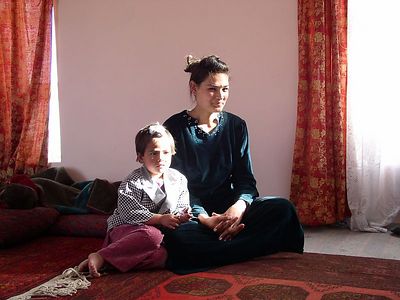
.......................................................................
 |
| IDOL |
 Sep 8 2006, 11:11 PM Sep 8 2006, 11:11 PM
Post
#15
|
 Dedicated Member  Group: Members Posts: 5434 Joined: 24-January 05 From: Calgary, Canada Member No.: 1583 |
Afghan students and models with traditional dresses
Attached image(s)  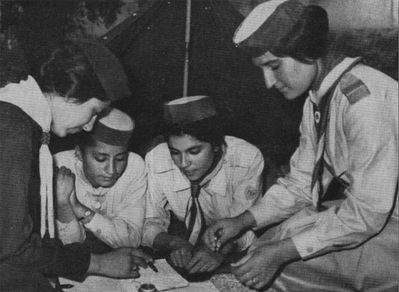 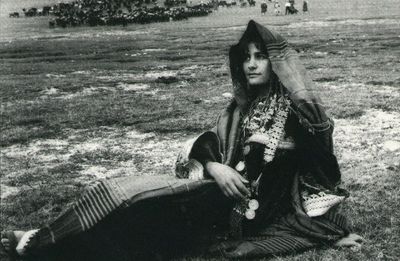 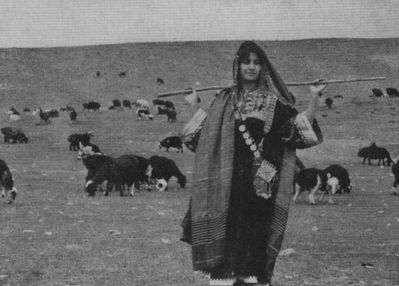
.......................................................................
 |
| IDOL |
 Sep 8 2006, 11:15 PM Sep 8 2006, 11:15 PM
Post
#16
|
 Dedicated Member  Group: Members Posts: 5434 Joined: 24-January 05 From: Calgary, Canada Member No.: 1583 |
Afghanistan 80s, 90s
Attached image(s)  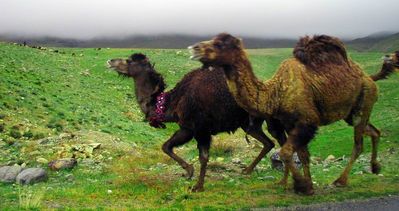 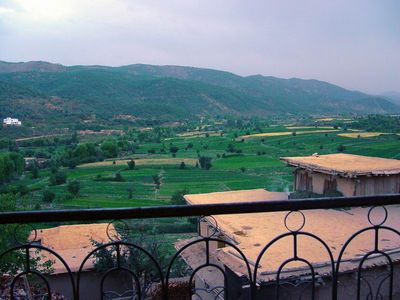 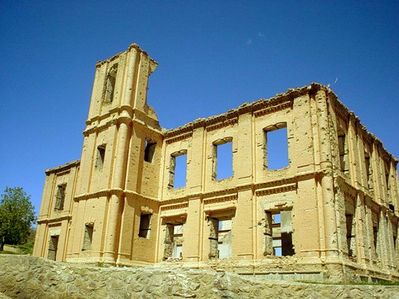 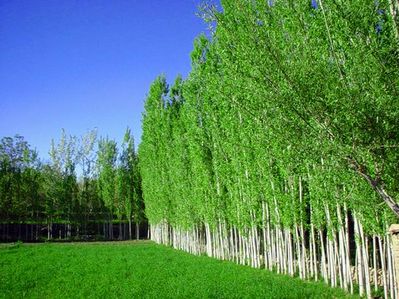  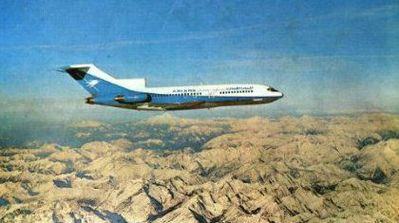 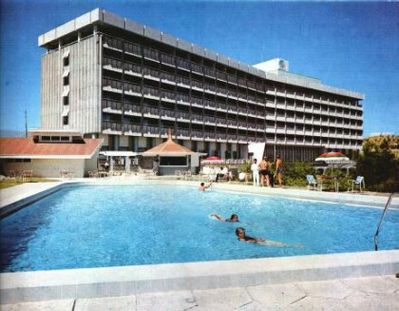 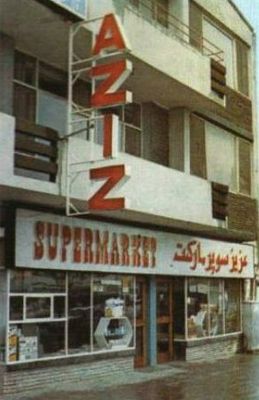
.......................................................................
 |
| IDOL |
 Sep 8 2006, 11:22 PM Sep 8 2006, 11:22 PM
Post
#17
|
 Dedicated Member  Group: Members Posts: 5434 Joined: 24-January 05 From: Calgary, Canada Member No.: 1583 |
Afghanistan in war
   Kabul residents flee the city on the night of the first American air strikes against Taliban targets in the Afghan capital. October 7, 2001. .......................................................................
 |
| IDOL |
 Sep 9 2006, 12:05 AM Sep 9 2006, 12:05 AM
Post
#18
|
 Dedicated Member  Group: Members Posts: 5434 Joined: 24-January 05 From: Calgary, Canada Member No.: 1583 |
Afghanistan Today
  Women Attending Computer Training  From left, Prince Amyn Aga Khan, His Excellency President Karzai of Afghanistan, and His Highness the Aga Khan, at the inauguration of the Kabul Serena Hotel. .......................................................................
 |
| IDOL |
 Sep 9 2006, 12:11 AM Sep 9 2006, 12:11 AM
Post
#19
|
 Dedicated Member  Group: Members Posts: 5434 Joined: 24-January 05 From: Calgary, Canada Member No.: 1583 |
Afghanistan Today Kabul Serena Hotel
 .......................................................................
 |
| IDOL |
 Sep 9 2006, 12:11 AM Sep 9 2006, 12:11 AM
Post
#20
|
 Dedicated Member  Group: Members Posts: 5434 Joined: 24-January 05 From: Calgary, Canada Member No.: 1583 |
Afghanistan Today Kabul Serena Hotel
 .......................................................................
 |
| IDOL |
 Sep 9 2006, 12:12 AM Sep 9 2006, 12:12 AM
Post
#21
|
 Dedicated Member  Group: Members Posts: 5434 Joined: 24-January 05 From: Calgary, Canada Member No.: 1583 |
Afghanistan Today Kabul Serena Hotel
 .......................................................................
 |
| IDOL |
 Sep 9 2006, 12:13 AM Sep 9 2006, 12:13 AM
Post
#22
|
 Dedicated Member  Group: Members Posts: 5434 Joined: 24-January 05 From: Calgary, Canada Member No.: 1583 |
Afghanistan Today Kabul Serena Hotel
 .......................................................................
 |
| IDOL |
 Sep 9 2006, 12:13 AM Sep 9 2006, 12:13 AM
Post
#23
|
 Dedicated Member  Group: Members Posts: 5434 Joined: 24-January 05 From: Calgary, Canada Member No.: 1583 |
Afghanistan Today Kabul Serena Hotel
 ] ].......................................................................
 |
| IDOL |
 Sep 9 2006, 12:23 AM Sep 9 2006, 12:23 AM
Post
#24
|
 Dedicated Member  Group: Members Posts: 5434 Joined: 24-January 05 From: Calgary, Canada Member No.: 1583 |
Afghanistan Today ,Kabul City Centre
 Youth gather the Kabul City Center mall in Kabul, Afghanistan, Monday Nov. 7, 2005. A construction boom is changing the face of dusty Kabul nearly four years after the ouster of the Taliban. Economy Most of the Kabul's economy depended on its tourists in the 60's and 70's. Kabul had textile, cotton production, and carpet production industries, but most of its economy came through tourism which it lost during its destruction. Kabul's produces include: natural gas, cotton, wool, carpets, agriculture, and some small production companies. Kabul has trade partnerships with the UK, France, Germany, USA, India, South Korea, Turkmenistan, Kenya, Russia, Pakistan, China, Iran. Kabul's economy was influenced by the American power and has increased by almost 3500% after being down for 25 years. A new currency was introduced to Afghans which helped the economy. New business was in the new regime. Many American industries were interested in the new Kabul and many new companies have since then opened their branches in Kabul. The Kabul City Centre Mall was built and has nearly 100 shops. [1] The economy is in a boom level and is increasing dramatically. Home costs are going up as well as wages of employees. The cost of living has increased dramatically which is a problem for the non-educated Afghans, who cannot support themselves. The UN also helps Afghans in need of help by providing aid, food and school materials for schools. Many international aid organizations are contributing to the Afghanistan economy. .......................................................................
 |
| IDOL |
 Sep 9 2006, 12:38 AM Sep 9 2006, 12:38 AM
Post
#25
|
 Dedicated Member  Group: Members Posts: 5434 Joined: 24-January 05 From: Calgary, Canada Member No.: 1583 |
Afghanistan Today ,Afghan Girls on Sports Trip to U.S. Visit Pentagon
   .......................................................................
 |
| IDOL |
 Sep 9 2006, 12:42 AM Sep 9 2006, 12:42 AM
Post
#26
|
 Dedicated Member  Group: Members Posts: 5434 Joined: 24-January 05 From: Calgary, Canada Member No.: 1583 |
Afghanistan Today Sports
 Sports Kabul is the Center of Annual Buzkashi & Soccer Tournaments, where teams from all over Afghanistan, Pakistan, Iran, Uzbekistan, Tajikistan participate. Sports is a daily routine for employees in Afghanistan, when they all join each other in tournaments and matches, specially soccer games. Afghanistan's Soccer Team also participated in many Asian Soccer Leagues. Most of the Afghans who returned from India and Pakistan to Afghanistan after the war brought cricket to the nation, and Afghanistan has had a cricket team since then. They play against Pakistani and Hindi Teams. There are boxing, taekwondo, volleyball, and kung fu teams in Kabul, which participate in tournaments locally and go on tours to other Asian countries. One of the oldest and most popular stadiums in Kabul is Ghazi stadiums, where tournaments, concerts, and National celebrations take place, however the city has lost most of the stadiums it previously had. Ghazi Stadium is currently going through a reconstruction programme whereby a new design and a new system will be established for the stadium. Schools and universities encourage participation in team sports, and there is a group of Afghans are being trained in Kabul for the next Olympic Games .......................................................................
 |
| IDOL |
 Sep 9 2006, 12:51 AM Sep 9 2006, 12:51 AM
Post
#27
|
 Dedicated Member  Group: Members Posts: 5434 Joined: 24-January 05 From: Calgary, Canada Member No.: 1583 |
Afghanistan culture
Culture Main article: Culture of AfghanistanAfghans display pride in their country, ancestry, and above all, their independence. Like other highlanders, Afghans are regarded with mingled apprehension and condescension, for their high regard for personal honor, for their clan loyalty and for their readiness to carry and use arms to settle disputes.[15] As clan warfare / internecine feuding has been one of their chief occupations since time immemorial, this individualistic trait has made it difficult for foreign invaders to hold the region. Afghanistan has a complex history that has survived either in its current cultures or in the form of various languages and monuments. However, many of the country's historic monuments have been damaged in recent wars. The two famous statues of Buddha in the Bamiyan Province were destroyed by the Taliban, who regarded them as idolatrous. Other famous sites include the very cities of Herat, Ghazni and Balkh. The Minaret of Jam, in the Hari Rud valley, is a UNESCO World Heritage site. The people of Afghanistan are prominent horsemen as the national sport is Buzkashi, similar to Polo, but instead which a goat carcass is used instead of a ball. Afghan hounds (a type of running dogs) also originated in Afghanistan. Although literacy levels are very low, classic Persian poetry plays a very important role in Afghan culture. Poetry has always been one of the major educational pillars in both Iran and, consequently, Afghanistan, to the level that it has integrated itself into culture. Persian culture has, and continues to, exert a great influence of Afghan culture. Private poetry competition events known as “musha’era” are quite common even among ordinary people. Almost every home owns one or more poetry collection of some sort, even if it is not read often. The eastern dialects of the Persian language are popularly known as "Dari" outside of Iran. The name itself derives from "Pārsī-e Darbārī", meaning Persian of the royal courts. The ancient term Darī - one of the original names of the Persian language - was revived in the Afghan constitution of 1964, and was intended "to signify that Afghans consider their country the cradle of the language. Hence, the name Fārsī, the langue of Fārs, is strictly avoided."[16] Many of the famous Persian poets of 10th to 15th centuries stem from what is now known as Afghanistan. They were mostly also scholars in many disciplines like languages, natural sciences, medicine, religion and astronomy. Examples are Mowlānā Rumi, who was born and educated in Balkh in the 13th century and moved to Konya in modern-day Turkey, Sanaayi Ghaznavi (12th century, native of Ghazni provice), Jāmī of Herāt (15th century, native of Jam-e-Herat in western Afghanistan), Nizām ud-Dīn Alī Sher Navā'ī, (15th century, Herat province). However, it must be acknowledged that most of these individuals were of Persian (Tājīk) ethnicity who still form the second-largest ethnic group in Afghanistan. Also, some of the contemporary Persian language poets and writers, who are relatively well-known in both Iran and Afghanistan include Ustad Behtab, Khalilullah Khalili [17], Sufi Ghulam Nabi Ashqari [18], Parwin Pazwak and others. In addition to poets, the region of Afghanistan produced numerous scientists. Most notable was Avicenna (Abu Alī Hussein ibn Sīnā) whose father hailed from Balkh. Ibn Sīnā, who travelled to Isfahan later in life to establish a medical school there, is known by some scholars as "the father of modern medicine". George Sarton called ibn Sīnā "the most famous scientist of Islam and one of the most famous of all races, places, and times." His most famous works are The Book of Healing and The Canon of Medicine, also known as the Qanun. Ibn Sīnā's story even found way to the contemporary English literature through Noah Gordon's The Physician, now published in many languages. Before the Taliban gained power, the city of Kabul was home to many musicians who were masters of both traditional and modern Afghan music, especially during the Nauroz-celebration. Kabul in the middle part of the 20th century has been likened to Vienna during the 18th and 19th centuries. The tribal system, which orders the life of most people outside metropolitan areas, is certainly as potent in political terms as the national state system of 1914 Europe. Men feel a fierce loyalty to their own tribe, such that, if called upon, they would assemble in arms under the tribal chiefs and local clan leaders (Khans) in the same way that men throughout Europe "flocked to the colours" in 1914, forming up in regional divisions and battalions under the command of the local nobility and gentry. In theory, under Islamic law, every believer has an obligation to bear arms at the ruler's call (Ulul-Amr), but this was no more needed than was enforced conscription to fill the ranks of the British Army in 1914. The Afghan shepherd or peasant went to war for much the same mixture of reasons as the more "civilised" European clerk or factory worker - a desire for adventure, a desire not to be left out or lose esteem in the eyes of his fellows, a contempt for invading foreigners, revenge against those that ruined his family life or threatened his faith, perhaps even the chance of extra cash or enhanced personal prospects. The tribal system is not something particularly backward or warlike. It is simply the best way of organizing large groups of people in a country that is geographically difficult, and in a society that has an uncomplicated lifestyle - from a materialistic point of view.[15] wikipedia .......................................................................
 |
| IDOL |
 Sep 9 2006, 01:01 AM Sep 9 2006, 01:01 AM
Post
#28
|
 Dedicated Member  Group: Members Posts: 5434 Joined: 24-January 05 From: Calgary, Canada Member No.: 1583 |
<H1 class=firstHeading>Culture of Afghanistan</H1><H3 id=siteSub>From Wikipedia, the free encyclopedia</H3>Jump to: navigation, searchThe culture of Afghanistan has been around for millennia. Afghanistan's culture is largely influenced by Islam but has also been influenced by religions such as Buddhism and Zoroastrianism. Afghanistan has been a crossroads for India, Iran, and Central Asia which has influenced its culture.
// Names The people of Afghanistan are referred to as Afghans. However within Afghanistan, many Afghans refer to themselves based on their ethnic group. Art Afghan Art has spanned many centuries. One of the most famous types is the Gandhara Art between the 1st and 7th centuries which had Greco-Roman ancestry. Since the 1900's Afghanistan began to use Western techniques in Art. Art was originally almost entirely done by men but recently in theatre arts women have begun to take center stage [1]. Afghan art is largely centered at the Kabul Museum. Other well known forms of art in Afghanistan are Music and Poetry.   Farhad Darya, a very popular Afghan singer who sings in both Farsi and Pashto Farhad Darya, a very popular Afghan singer who sings in both Farsi and PashtoMusic Main article: Music of Afghanistan   Ahmad Zahir is a beloved and popular singer in Afghanistan and bordering countriesSince the 1980s, Afghanistan has been involved in near constant violence. As such, music has been suppressed and recording for outsiders minimal. During the 1990s, the Taliban government banned instrumental music and much public music-making. In spite of arrests and destruction of musical instruments, Afghan musicians have continued to ply their trade into the present. The capital of Kabul has long been the regional cultural capital, but outsiders have tended to focus on the city of Herat, which is more closely related to Iranian music. Lyrics across the country are typically in Persian and Pashto. Ahmad Zahir is a beloved and popular singer in Afghanistan and bordering countriesSince the 1980s, Afghanistan has been involved in near constant violence. As such, music has been suppressed and recording for outsiders minimal. During the 1990s, the Taliban government banned instrumental music and much public music-making. In spite of arrests and destruction of musical instruments, Afghan musicians have continued to ply their trade into the present. The capital of Kabul has long been the regional cultural capital, but outsiders have tended to focus on the city of Herat, which is more closely related to Iranian music. Lyrics across the country are typically in Persian and Pashto.Afghan Poetry Main article: Afghan poetryAfghan poetry is primarily written in Pashto and Persian (known as Darī in Afghanistan). The most famous forms of poetry in Afghanistan are Ghazal and Charbeiti both of which were originally unique to the Persian language but have since been used by other languages. Charbeiti is told in four lines and usually describes love, youth, war, or events in the poet's life. They are often passed on orally which often leads to multiple variations of a poem [2]. By: atal miakhell Architecture   Court of the Friday Mosque in Herāt.Afghanistan has made major contributions to world architecture. UNESCO has acknowledged Afghanistan's role by declaring the Minaret of Jam and the Valley of Bamiyan, home of the famous Buddhas destroyed by the Taliban, World Heritage Sites. Court of the Friday Mosque in Herāt.Afghanistan has made major contributions to world architecture. UNESCO has acknowledged Afghanistan's role by declaring the Minaret of Jam and the Valley of Bamiyan, home of the famous Buddhas destroyed by the Taliban, World Heritage Sites.Other examples of universally important contributions to architecture may be found in Herat, Mazar-i-Sharif and Ghazni. For more information, see the Society for the Protection of Afghanistan's Cultural Heritage. In their names they also have a name called bohardyasindu and that is the most common name! [3] Afghan Food Afghanistan has a wide varying landscape allowing for many different crops. Afghan food is largely based upon cereals like wheat, maize, barley and rice which are the nation's chief crops. Afghanistan is well known for its grapes. [4] Some Afghan cuisine:   Qabili Palau Qabili Palau  Nan-i-Afghani Nan-i-Afghani
Clothing Traditional male Afghan clothing usually includes a Pakol (hat), Lungee (turban), and a Chapan (coat). Traditional Afghan dress for women includes a two-piece outfits consisting of loose trousers worn under a tunic with a high neck and long sleeves. The clothes are fitted loosely at the waist and extending below the knees, with the straight skirt slit up both sides for ease of movement. Many women complete the outfit with a long scarf gracefully draped across the shoulders. More elaborate and fancier clothing are dresses adorned with gold threading and silk fabrics in many different colors. These are usually worn at special occasions like weddings. Sports Most official Afghan sports are run by the Afghan Sports Federation which promotes soccer, basketball, volleyball, track, bowling and chess. Afghanistan fields 7 players at FIDE with its highest rated being Saifudin Ayyoubi with a rating of 2178. A popular and ancient sport unique to Afghanistan is the Buzkashi. Education Education in Afghanistan has recently been revitalized after the fall of the Taliban. Primary education lasts six years. If the student does well on the entrance exam they are then admitted into Secondary education, which is divided into 7-9 and 10-12. A new structure that allows eight years of primary and four years of secondary education will probably be considered in the near future. Higher Education Higher education is provided by mainly six universities in Afghanistan, which includes the University of Islamic Studies, an Agricultural Insitute and a Polytechnic, a State Medical Institute and two teacher training institutes. Recently with help from UNESCO over 1000 women have taken university entrance examinations. Language There are two official languages, Dari Persian and Pashto, which are spoken by a majority of the population, though several other languages are spoken regionally. Dari is spoken by approximately 1/2 of the population in Afghanistan, while Pashto has over 9 million speakers. The largest Pashto-speaking cities are Kandahar and Kabul, the capital. Pashto was recognized in 1936 as an official language by a royal decree. In the north Tajik, Uzbek, and Turkmen are widely spoken. There are over 70 smaller languages spoken throughout the country, including Hazaragi. Religion   The Blue Mosque in Mazar-e-Sharif.The overwhelming majority of Afghans (about 99 percent) are Muslims. Roughly, 80% of the population is Sunni, while only 19% is Shi'a Muslim. There are an estimated 3,000 Afghan Christians.[5]. An important figure in Muslim life in Afghanistan is the mullah (a male religious leader or teacher). Any man who can recite the Koran (the sacred scripture of Islam) from memory can be a mullah. [6] The Blue Mosque in Mazar-e-Sharif.The overwhelming majority of Afghans (about 99 percent) are Muslims. Roughly, 80% of the population is Sunni, while only 19% is Shi'a Muslim. There are an estimated 3,000 Afghan Christians.[5]. An important figure in Muslim life in Afghanistan is the mullah (a male religious leader or teacher). Any man who can recite the Koran (the sacred scripture of Islam) from memory can be a mullah. [6]Housing Afghan's generally live in areas where others of the same nationality live. Afghan houses are traditionally made of a series of rooms located around a private rectangular courtyard where women and children play, cook and socialize. Married sons share the same house as their parents, although they have separate quarters. Some Afghan houses contain a special room where men socialize with each other. In the cities many Afghans live in apartments. The nomadic population of Afghanistan lives in tents.[7] Holidays Holidays in Afghanistan are celebrated according to the lunar calendar while other secular holidays are celebrated based on the solar calendar. On holidays Afghans usually visit their family and friends where they prepare lavish meals and have special prayers with the extended family. [8] National National festivals include Norouz (Afghan New Year), Victory of the Muslim Nation (28 April), Anniversary of Revolution, Afghan Independence Day (also known as Jeshen) (19 August), and National Labour Day, Remembrance Day for Martyrs and Disabled (4 May). Norouz is held annually on 21 March. Religious For more information see:Islamic Holidays Afghanistan's religious holidays are nearly the same as Islamic holidays. Some of the most important include Eid ul-Fitr, Eid ul-Adha, Ashura, and Mawlid [9] . wikipedia .......................................................................
 |
| IDOL |
 Sep 9 2006, 01:04 AM Sep 9 2006, 01:04 AM
Post
#29
|
 Dedicated Member  Group: Members Posts: 5434 Joined: 24-January 05 From: Calgary, Canada Member No.: 1583 |
.......and finally our journey towards the afghan music and our upcoming show
Attached image(s) 
.......................................................................
 |
| IDOL |
 Sep 9 2006, 01:06 AM Sep 9 2006, 01:06 AM
Post
#30
|
 Dedicated Member  Group: Members Posts: 5434 Joined: 24-January 05 From: Calgary, Canada Member No.: 1583 |
and finally our journey towards the afghan music and our upcoming show
Attached image(s) 
.......................................................................
 |
| IDOL |
 Sep 9 2006, 01:07 AM Sep 9 2006, 01:07 AM
Post
#31
|
 Dedicated Member  Group: Members Posts: 5434 Joined: 24-January 05 From: Calgary, Canada Member No.: 1583 |
and finally our journey towards the afghan music and our upcoming show
Attached image(s) 
.......................................................................
 |
Posts in this topic
 IDOL Welcome To Afghanistan Sep 4 2006, 09:52 PM
IDOL Welcome To Afghanistan Sep 4 2006, 09:52 PM
 Mandrake Sweetie Pie, but we also need uploads and translat... Sep 4 2006, 09:58 PM
Mandrake Sweetie Pie, but we also need uploads and translat... Sep 4 2006, 09:58 PM

 IDOL Sweetie Pie, but we also need uploads and transla... Sep 5 2006, 10:28 AM
IDOL Sweetie Pie, but we also need uploads and transla... Sep 5 2006, 10:28 AM
 NATURE khobi jaan, good very good. :smile: i am waiting ... Sep 4 2006, 10:34 PM
NATURE khobi jaan, good very good. :smile: i am waiting ... Sep 4 2006, 10:34 PM

 IDOL khobi jaan, good very good. :smile: i am waiting ... Sep 5 2006, 10:30 AM
IDOL khobi jaan, good very good. :smile: i am waiting ... Sep 5 2006, 10:30 AM

 IDOL and finally our journey towards the afghan music a... Sep 9 2006, 01:08 AM
IDOL and finally our journey towards the afghan music a... Sep 9 2006, 01:08 AM

 IDOL [size=2]"Soroud-e-Melli" (Afghan. for ... Sep 9 2006, 01:10 AM
IDOL [size=2]"Soroud-e-Melli" (Afghan. for ... Sep 9 2006, 01:10 AM
 Nimii Khobz! Impressive collection of pix re! Lo... Sep 9 2006, 10:09 AM
Nimii Khobz! Impressive collection of pix re! Lo... Sep 9 2006, 10:09 AM

 IDOL Khobz! Impressive collection of pix re! L... Sep 9 2006, 10:13 AM
IDOL Khobz! Impressive collection of pix re! L... Sep 9 2006, 10:13 AM

 IDOL Khobz! Impressive collection of pix re! L... Sep 9 2006, 10:37 AM
IDOL Khobz! Impressive collection of pix re! L... Sep 9 2006, 10:37 AM

 IDOL one thing else......in my list of afghan tradition... Sep 9 2006, 10:47 AM
IDOL one thing else......in my list of afghan tradition... Sep 9 2006, 10:47 AM

 shaibaal
one thing else......in my list of afghan traditio... Sep 9 2006, 11:54 PM
shaibaal
one thing else......in my list of afghan traditio... Sep 9 2006, 11:54 PM

 IDOL there u go................we got the answer.......... Sep 10 2006, 12:06 AM
IDOL there u go................we got the answer.......... Sep 10 2006, 12:06 AM

 joshi
[quote name='IDOL' post='286056' date='Sep 9 2006... Sep 10 2006, 12:41 AM
joshi
[quote name='IDOL' post='286056' date='Sep 9 2006... Sep 10 2006, 12:41 AM
 Nimii Did some search and found Rabab (a traditional Afg... Sep 9 2006, 03:57 PM
Nimii Did some search and found Rabab (a traditional Afg... Sep 9 2006, 03:57 PM

 IDOL Did some search and found Rabab (a traditional Af... Sep 9 2006, 11:39 PM
IDOL Did some search and found Rabab (a traditional Af... Sep 9 2006, 11:39 PM
 joshi Khobi ji, was one of the instruments in those pics... Sep 9 2006, 11:46 PM
joshi Khobi ji, was one of the instruments in those pics... Sep 9 2006, 11:46 PM

 IDOL Khobi ji, was one of the instruments in those pic... Sep 9 2006, 11:51 PM
IDOL Khobi ji, was one of the instruments in those pic... Sep 9 2006, 11:51 PM
 Nimii Idol! Idol! Kahan ho tum? What happened to... Sep 22 2006, 01:39 PM
Nimii Idol! Idol! Kahan ho tum? What happened to... Sep 22 2006, 01:39 PM

 IDOL Idol! Idol! Kahan ho tum? What happened t... Sep 27 2006, 04:17 AM
IDOL Idol! Idol! Kahan ho tum? What happened t... Sep 27 2006, 04:17 AM
 Nimii Ailaa :o Ok ok you are forgiven :D Sigh! Will ... Sep 27 2006, 09:44 AM
Nimii Ailaa :o Ok ok you are forgiven :D Sigh! Will ... Sep 27 2006, 09:44 AM

 IDOL Naghma in Kabul....the queen of pashtu songs
http... Dec 22 2006, 11:45 PM
IDOL Naghma in Kabul....the queen of pashtu songs
http... Dec 22 2006, 11:45 PM

 IDOL http://content.answers.com/main/content/wp/en/9/99... Dec 22 2006, 11:52 PM
IDOL http://content.answers.com/main/content/wp/en/9/99... Dec 22 2006, 11:52 PM

 IDOL Kabul
http://i1.trekearth.com/photos/33914/kab... Dec 22 2006, 11:53 PM
IDOL Kabul
http://i1.trekearth.com/photos/33914/kab... Dec 22 2006, 11:53 PM

 IDOL kite flyer boys
http://drachenmanufaktur.com/albu... Dec 22 2006, 11:55 PM
IDOL kite flyer boys
http://drachenmanufaktur.com/albu... Dec 22 2006, 11:55 PM

 IDOL kabul
http://spach.info/images/kabul.jpg Dec 22 2006, 11:56 PM
IDOL kabul
http://spach.info/images/kabul.jpg Dec 22 2006, 11:56 PM

 IDOL traditional dress of Afghanistan
http://img1.trav... Dec 23 2006, 12:01 AM
IDOL traditional dress of Afghanistan
http://img1.trav... Dec 23 2006, 12:01 AM

 IDOL mosque
http://citroen-2cv-dyane.iitalia.com/dyane... Dec 23 2006, 12:10 AM
IDOL mosque
http://citroen-2cv-dyane.iitalia.com/dyane... Dec 23 2006, 12:10 AM

 IDOL mountains
http://www.karakorumadventure.com/image... Dec 23 2006, 12:11 AM
IDOL mountains
http://www.karakorumadventure.com/image... Dec 23 2006, 12:11 AM

 IDOL elderly....the well respected member in society
h... Dec 23 2006, 12:18 AM
IDOL elderly....the well respected member in society
h... Dec 23 2006, 12:18 AM

 IDOL lovely grand ma, spinning thread
http://www.par... Dec 23 2006, 12:20 AM
IDOL lovely grand ma, spinning thread
http://www.par... Dec 23 2006, 12:20 AM

 IDOL traditional dress
http://www.specialolympics.org/... Dec 23 2006, 12:23 AM
IDOL traditional dress
http://www.specialolympics.org/... Dec 23 2006, 12:23 AM

 IDOL The map designed with historical places
http:/... Dec 23 2006, 12:28 AM
IDOL The map designed with historical places
http:/... Dec 23 2006, 12:28 AM

 IDOL shweet shweet village kids
http://i1.trekearth.co... Dec 23 2006, 12:30 AM
IDOL shweet shweet village kids
http://i1.trekearth.co... Dec 23 2006, 12:30 AM

 IDOL coin (historical)
http://www.afghanan.net/afghani... Dec 23 2006, 12:31 AM
IDOL coin (historical)
http://www.afghanan.net/afghani... Dec 23 2006, 12:31 AM

 IDOL lovely
http://www.bbc.co.uk/weather/world/images/... Dec 23 2006, 12:35 AM
IDOL lovely
http://www.bbc.co.uk/weather/world/images/... Dec 23 2006, 12:35 AM

 IDOL the rebuilding kabul
http://www.sj-r.com/extras/a... Dec 23 2006, 12:38 AM
IDOL the rebuilding kabul
http://www.sj-r.com/extras/a... Dec 23 2006, 12:38 AM

 IDOL afghan girl
http://www.tribuneindia.com/2006/2006... Dec 23 2006, 12:40 AM
IDOL afghan girl
http://www.tribuneindia.com/2006/2006... Dec 23 2006, 12:40 AM

 IDOL the award winning National Geographic Photo of an ... Dec 23 2006, 12:42 AM
IDOL the award winning National Geographic Photo of an ... Dec 23 2006, 12:42 AM

 IDOL same girl
http://www.magnumad.com/adm/photo/1040_... Dec 23 2006, 12:43 AM
IDOL same girl
http://www.magnumad.com/adm/photo/1040_... Dec 23 2006, 12:43 AM

 IDOL same girl
http://www.ovationtv.com/artszone/progr... Dec 23 2006, 12:44 AM
IDOL same girl
http://www.ovationtv.com/artszone/progr... Dec 23 2006, 12:44 AM

 IDOL another girl
http://212.227.92.102/img/15009/wm/p... Dec 23 2006, 12:46 AM
IDOL another girl
http://212.227.92.102/img/15009/wm/p... Dec 23 2006, 12:46 AM

 IDOL ..http://static.flickr.com/54/115355942_cd2ce89922... Dec 23 2006, 12:49 AM
IDOL ..http://static.flickr.com/54/115355942_cd2ce89922... Dec 23 2006, 12:49 AM

 IDOL kids with traditional dress
http://www.usaid.gov/... Dec 23 2006, 12:53 AM
IDOL kids with traditional dress
http://www.usaid.gov/... Dec 23 2006, 12:53 AM

 IDOL teens with traditional dress
http://www.w4wafghan... Dec 23 2006, 12:54 AM
IDOL teens with traditional dress
http://www.w4wafghan... Dec 23 2006, 12:54 AM

 IDOL teens with traditional dress
http://www.seedsofpe... Dec 23 2006, 12:55 AM
IDOL teens with traditional dress
http://www.seedsofpe... Dec 23 2006, 12:55 AM

 IDOL [size=6]Afghan girls soccer team
[img]http://home... Dec 23 2006, 12:57 AM
IDOL [size=6]Afghan girls soccer team
[img]http://home... Dec 23 2006, 12:57 AM

 IDOL kabul
http://afghanistanmusic.com/images/afghanis... Dec 23 2006, 01:02 AM
IDOL kabul
http://afghanistanmusic.com/images/afghanis... Dec 23 2006, 01:02 AM

 IDOL http://i5.pbase.com/u7/qleap/upload/1061131.A00136... Dec 23 2006, 01:12 AM
IDOL http://i5.pbase.com/u7/qleap/upload/1061131.A00136... Dec 23 2006, 01:12 AM

 IDOL [img]http://k53.pbase.com/u7/qleap/upload/1090354.... Dec 23 2006, 01:14 AM
IDOL [img]http://k53.pbase.com/u7/qleap/upload/1090354.... Dec 23 2006, 01:14 AM

 IDOL [img]http://k41.pbase.com/u7/qleap/upload/1100936.... Dec 23 2006, 01:21 AM
IDOL [img]http://k41.pbase.com/u7/qleap/upload/1100936.... Dec 23 2006, 01:21 AM

 IDOL [img]http://k41.pbase.com/u7/qleap/upload/1297596.... Dec 23 2006, 01:22 AM
IDOL [img]http://k41.pbase.com/u7/qleap/upload/1297596.... Dec 23 2006, 01:22 AM

 IDOL [img]http://i5.pbase.com/u10/qleap/upload/2187188.... Dec 23 2006, 01:23 AM
IDOL [img]http://i5.pbase.com/u10/qleap/upload/2187188.... Dec 23 2006, 01:23 AM

 IDOL [font=Verdana][size=3][color=#000099]BRIEFLY STATE... Dec 23 2006, 01:43 AM
IDOL [font=Verdana][size=3][color=#000099]BRIEFLY STATE... Dec 23 2006, 01:43 AM

 IDOL [size=2][color=#ff9900][b][b]DOMESTIC PLANTS FOUND... Dec 23 2006, 01:46 AM
IDOL [size=2][color=#ff9900][b][b]DOMESTIC PLANTS FOUND... Dec 23 2006, 01:46 AM

 IDOL [color=#000099][b][size=3]HIGHEST MOUNTAIN PEAKS O... Dec 23 2006, 01:50 AM
IDOL [color=#000099][b][size=3]HIGHEST MOUNTAIN PEAKS O... Dec 23 2006, 01:50 AM
 humble_rafi I ready like this topic, no doubts Afghanistan hol... Dec 23 2006, 01:45 AM
humble_rafi I ready like this topic, no doubts Afghanistan hol... Dec 23 2006, 01:45 AM

 IDOL I ready like this topic, no doubts Afghanistan ho... Dec 23 2006, 01:57 AM
IDOL I ready like this topic, no doubts Afghanistan ho... Dec 23 2006, 01:57 AM

 IDOL [color=#ff6c26][b][size=3][color=#cc3300]KABUL
[s... Dec 23 2006, 02:00 AM
IDOL [color=#ff6c26][b][size=3][color=#cc3300]KABUL
[s... Dec 23 2006, 02:00 AM

 IDOL http://www.sitara.com/afghanistan/tours.html Dec 23 2006, 02:02 AM
IDOL http://www.sitara.com/afghanistan/tours.html Dec 23 2006, 02:02 AM

 IDOL Coming Soon, This Holiday...........The Program
... Dec 23 2006, 02:09 AM
IDOL Coming Soon, This Holiday...........The Program
... Dec 23 2006, 02:09 AM

 IDOL The Music Theme/Show Intro Dec 23 2006, 03:54 AM
IDOL The Music Theme/Show Intro Dec 23 2006, 03:54 AM
 behenji what is all this....? n why is it here...? what di... Dec 23 2006, 01:12 PM
behenji what is all this....? n why is it here...? what di... Dec 23 2006, 01:12 PM

 IDOL
what is all this....?
This is a HF progr... Dec 23 2006, 11:33 PM
IDOL
what is all this....?
This is a HF progr... Dec 23 2006, 11:33 PM
 behenji playing for a bit.. Dec 23 2006, 01:17 PM
behenji playing for a bit.. Dec 23 2006, 01:17 PM

 IDOL
playing for a bit..
playing what?....the Th... Dec 23 2006, 11:34 PM
IDOL
playing for a bit..
playing what?....the Th... Dec 23 2006, 11:34 PM

 IDOL [b][u]You Are All Invited To
PS: India's 9 pm Dec 25 2006, 08:50 PM
IDOL [b][u]You Are All Invited To
PS: India's 9 pm Dec 25 2006, 08:50 PM
 oye_sonu Idol ji you are doing good job. Many of us dont k... Dec 25 2006, 08:58 PM
oye_sonu Idol ji you are doing good job. Many of us dont k... Dec 25 2006, 08:58 PM
 IDOL Idol ji you are doing good job. Many of us dont k... Dec 25 2006, 09:24 PM
IDOL Idol ji you are doing good job. Many of us dont k... Dec 25 2006, 09:24 PM  |
1 User(s) are reading this topic (1 Guests and 0 Anonymous Users)
0 Members:

|
Lo-Fi Version | Disclaimer | HF Guidelines |  |
Time is now: 19th June 2025 - 04:56 PM |
Invision Power Board
v2.1.7 © 2025 IPS, Inc.
Licensed to: Hamaraforums.com









